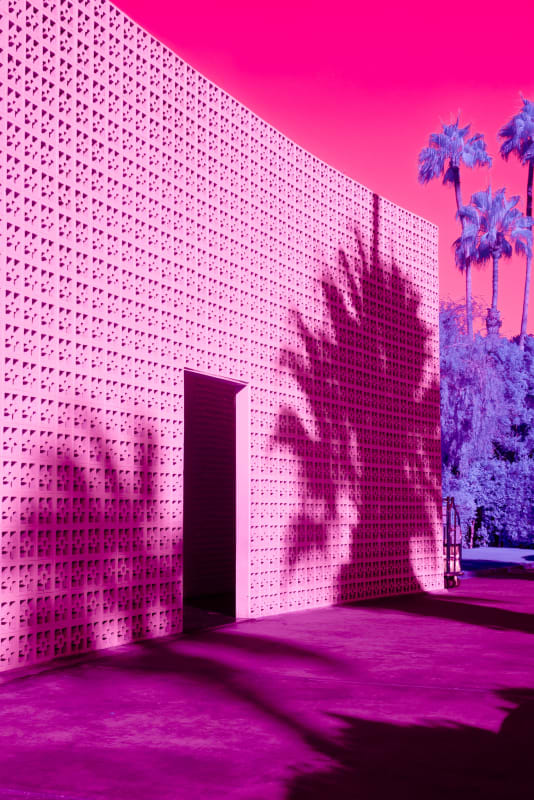The photographer Kate Ballis transforms desert landscapes into entirely surreal scenes that straddle the divide between saccharine and sinister.
The history of Palm Springs is as much a history of those who would visit as those who never managed to leave. Many of those figures who have shaped the desert landscape as much as the elements have have been artists for whom the region has proven as restorative as the mineral hot springs from which it derives its names (where stagecoach settlers called it ‘Palm Springs’, the native Cahuilla people called it Se-Khi, or ‘Boiling Water’).
Think of Julius Shulman, the iconic architectural photographer, who immortalized the Kaufmann House designed by Richard Neutra long before Slim Aarons’ captured his iconic photograph, Poolside Gossip. Or of the legion screen stars of Hollywood who traversed the San Jacinto Mountains seeking respite from the pressures of the Studio System. Many plein air painters were drawn to Palm Springs because of the crystalline light. In 1932, Agnes Pelton, a desert transcendentalist painter stopped in the Coachella Valley on her way to visit fellow painter Georgia O’Keeffe in New Mexico and never left. She passed away in Cathedral City in 1961.
For the Australian photographer Kate Ballis, Palm Springs is a site that resonates with this same mythic quality, though it hasn’t yet managed to entirely engulf her to the point it did Pelton – for now, at least. For the Melbourne-based Ballis and her husband, the photographer Tom Blachford, the area has become something akin to a second home. Both have documented the area, its landscape and its singular architecture, extensively over the years through their respective practices. In the last five years, Ballis estimates they’ve visited more than a dozen times, and throughout that time, they’ve been embraced by the local community. So significant has the place become to both artists that they wed there in mid-October.
For Ballis, it was a matter of love at first sight. “As soon as I saw the mountainous backdrop of Palm Springs, I fell in love,” Ballis says from Palm Springs, recalling first arriving in the area in 2013 having driven from San Diego to see for herself the remnants of a place and time immortalized by artists like the photographic great, William Egglestone. “There is a slight haze in front of the mountains, and the extreme elevation of the mountains makes it look like a fake backdrop to a Hollywood set. Driving around the streets of Twin Palms and Vista Las Palmas, which are filled with iconic midcentury architecture and vintage cars, and hearing Robert Ember’s stories of the Hollywood jet-set felt like we were in a time warp.” That first love – of the landscape, with its lunar contours and otherworldly life – continues unabated. “I’m forever enchanted by the changing light on the mountains, the precise landscaping full of succulents, the Palm oases and the Martian landscapes of Joshua Tree National Park,” says Ballis. It is a love that has given her cause to explore other landscapes so arid as to appear alien. In recent years, Ballis has since travelled to Arizona, the Atacama Desert in Chile, the Perito Moreno glacier in Argentina and the deserts and salt flats of Southern Bolivia – all landscapes that she endeavours to render in a light that suggests they’re of worlds far more unearthly than our own.
Through her lens, the all-too-familiar visual tropes of life in the desert are cast in an entirely surreal light, one that somehow manages to straddle the divide between saccharine and sinister. A swimming pool turns blood red, the sky ablaze in a post-apocalyptic hue. The prickly spines of golden barrel cacti, yucca and Joshua tree are recast as plush ornaments strewn across a deep pile carpet dyed indigo.

